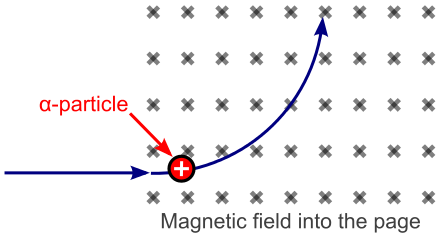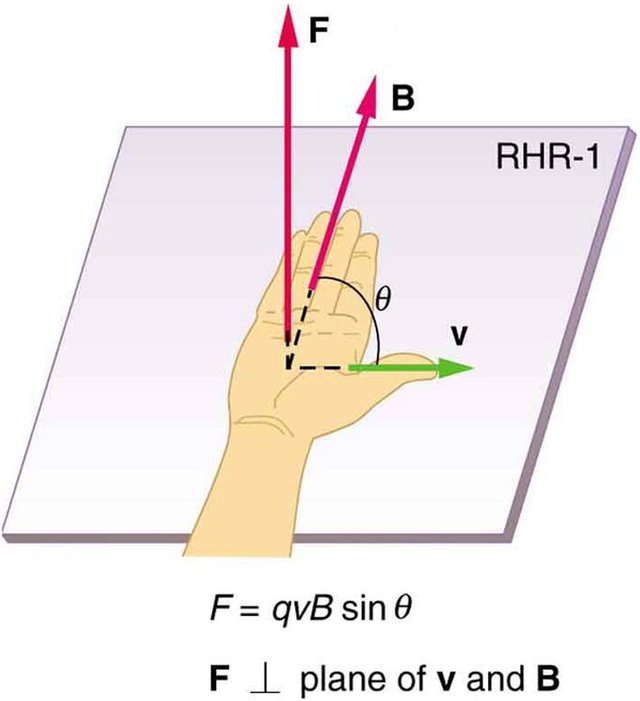Electric charge moving in a magnetic field
Suppose a charge particle having mass m having charge q enters in a magnetic field B with velocity v. Let θ is the angle between velocity and magnetic field. As charge behaves as a magnet while moving and when enters in a magnetic field , the external magnetic field exerts force on the magnetic field of the charge moving with velocity v. The charge will deflect, this deflection force depends upon following factors
1) Magnitude of the charge (q)
2) vertical component of velocity (vsinθ)
3) magnetic field (B)

credit
The magnetic force of deflection does not depend upon total velocity, it only depends upon vertical component with respect to the magnetic field. It was found experimentally that the charge enters horizontally experience no force. The force of deflection will be perpendicular to the plane containing the vectors of velocity and magnetic field.

F = qvBsinθ
This deflection defines an arc which belongs to a circle having radius r. The charge must experience some sort of centripetal force credit
F = m(vsinθ)2/r
As far as the motion of the charge is concerned, if there is no darg force, it is under the influence of single force. But there are two separate formulas of force is present above.It is just because, in this case magnetic force of deflection behaves as a centripetal force. The formulas belongs to a single force expressed differently. On comparing above equations
qvBsinθ = m(vsinθ)2/r
qvBsinθ = mv2sinθ2/r
qvBsinθ = mv2sinθ2/r
r = mvsinθ/qB
Result interpretation:
If an electron and proton enters in a magnetic field with same velocity and angle with the magnetic field, they both do not experience same deflection. The radius define by the proton have larger radius as compared to electron because proton is massive as compared to electron(radius is directly proportional to the mass of the particle).
If an electron and proton have same momentum, they will define same angular deviation because momentum is define as the product of mass and velocity. Same momentum means proton will have less velocity as compared to that electron to have same momentum.
Reference:
These formulas are present at so many sites and books, but I just wrote it consulting nothing.
How can reference be your own thought?
Clearly, terms like Lorentz force, centripetal force etc. are included.
These formulas are present at so many sites and books, but I just wrote it consulting nothing.
I think that what is meant here is the following. Even if this comes from your mind, it may be good to add a few links go get further pieces of information. Plenty of them are available on the web. Just give a couple. This may also ensure you greater rewards in the future, believe me ;)
Your suggestion is highly appreciated :-) . I'll take care of it now onwards.
Excellent! :)